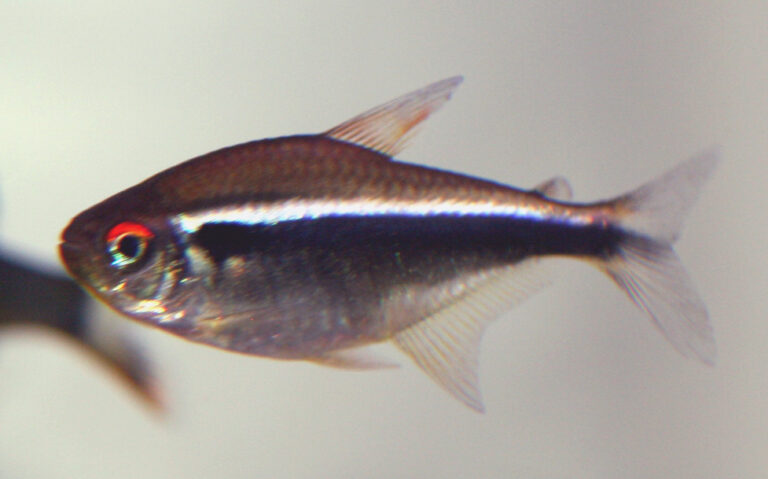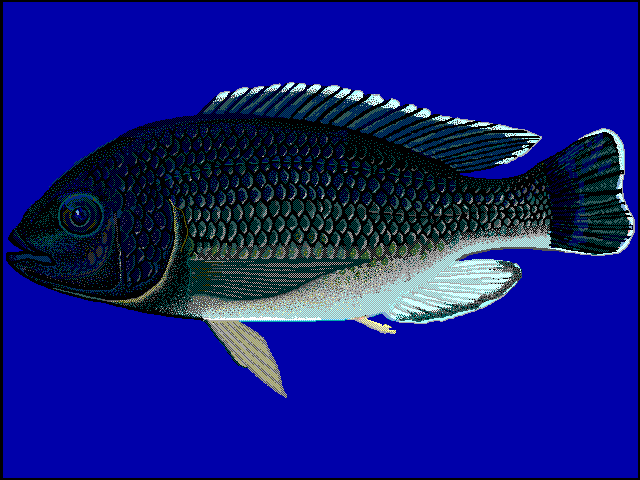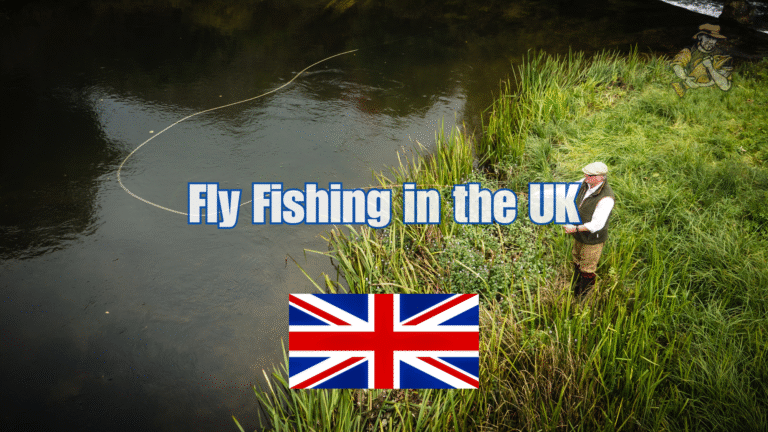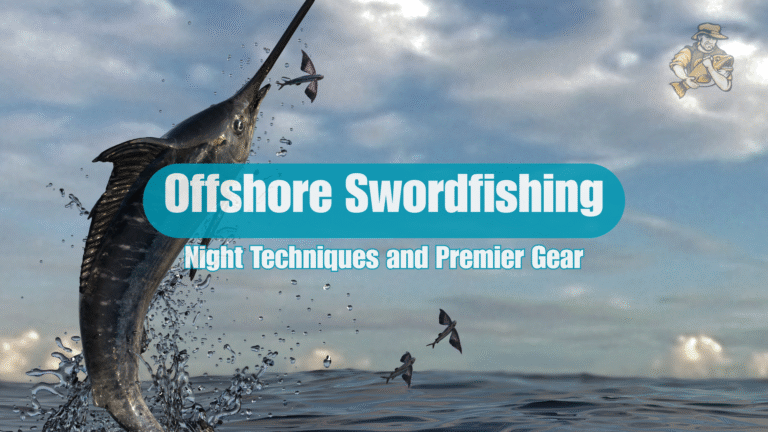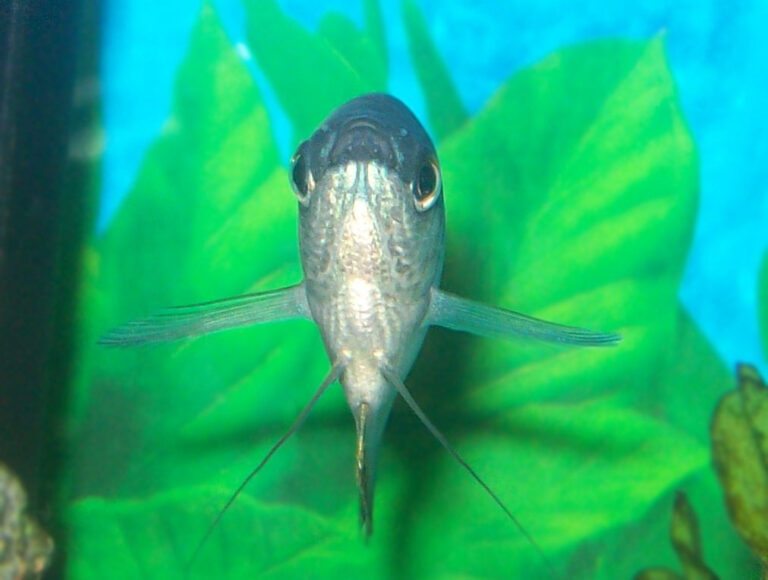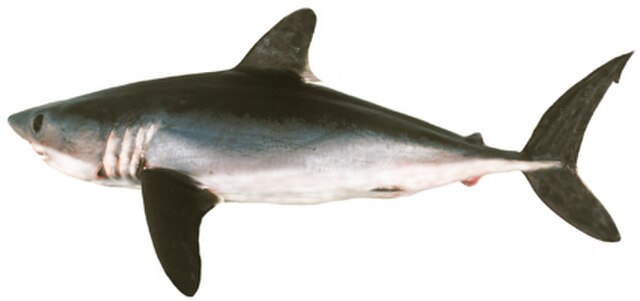Alaska Salmon Fishing: Planning Your Trip to the Last Frontier
By Adam Hawthorne | Last Modified: June 4, 2025
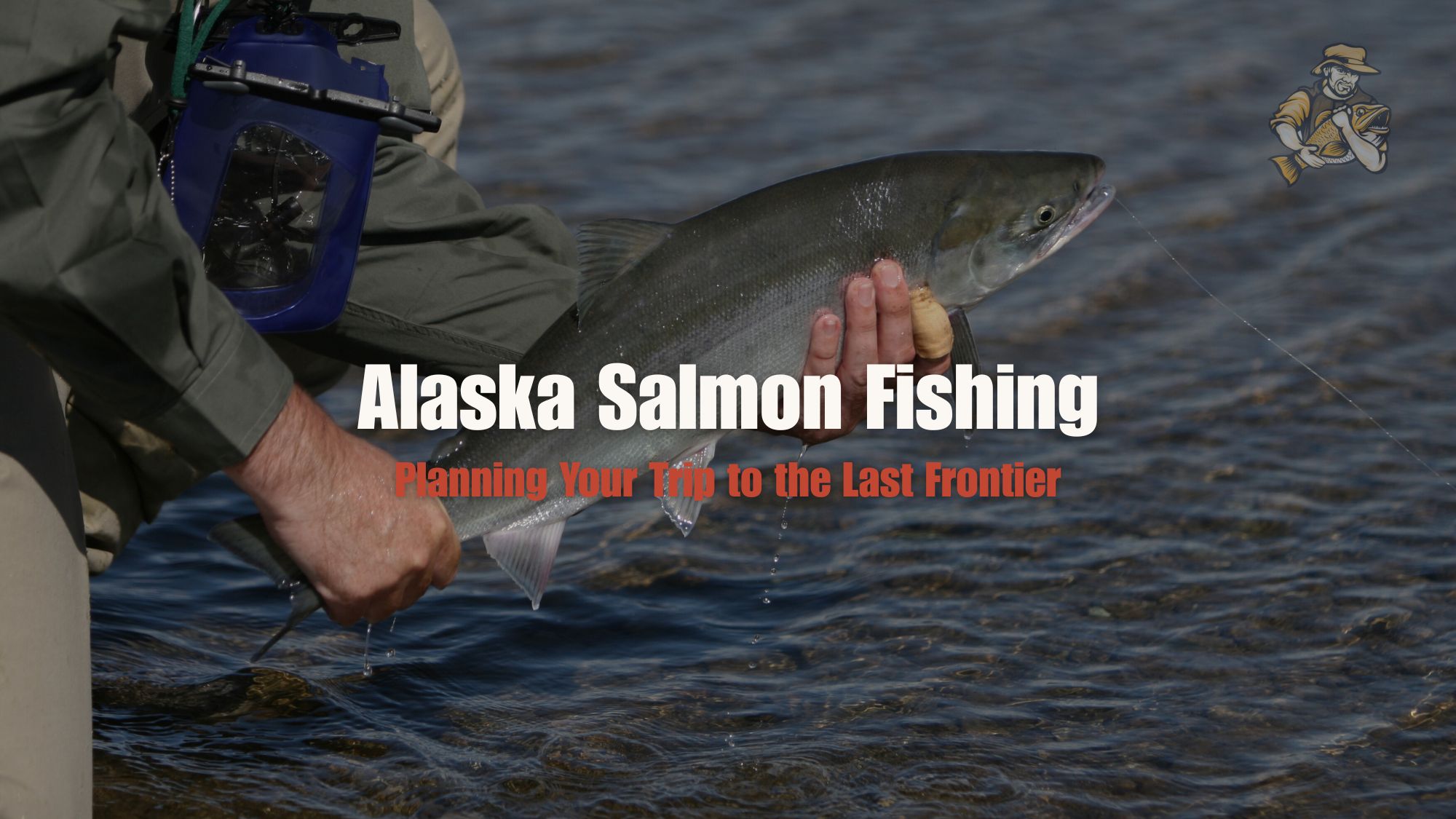
I still remember the first time I hooked into a Kenai River king salmon. It was July 15, 2019, around 5:30 in the morning. The fog was just lifting off the water, and my hands were still stiff from the unexpected overnight temperature drop. The guide – a gruff old-timer named Pete with a salt-and-pepper beard and caffeine addiction that rivaled mine – had positioned our boat in what looked like an unremarkable stretch of water.
“Trust me,” he’d said, sipping black coffee from a dented thermos that looked like it had survived several bear encounters. “The big boys hold right behind that submerged log.”
I was skeptical, having already spent three fishless days trying various spots. But on my fourth drift through that run, my rod doubled over so violently I nearly went overboard. What followed was a 23-minute battle with a 42-pound chrome monster that left me physically and emotionally drained.
That’s Alaska salmon fishing – equal parts frustration, wonder, and adrenaline. And if you’re reading this, you’re probably thinking about experiencing it yourself. Let me save you some of the headaches I’ve encountered over my five trips to the Last Frontier.
Understanding Alaska’s Salmon Runs: Timing Is Everything
Alaska’s salmon fishing isn’t just good – it’s legendary. But show up at the wrong time, and you might wonder what all the fuss is about. Each of the five Pacific salmon species follows distinctive run patterns, and they vary significantly by region within this massive state.
Let’s break down the typical run timing by species:
King (Chinook) Salmon
Kings are the largest and most coveted of the Pacific salmon. Most anglers I know dream about tangling with these bruisers.
- Southeast Alaska: Mid-May through early July
- Southcentral (Kenai Peninsula): Late May through July
- Western Alaska: June through mid-July
- Interior: Late June through July
King salmon fishing in Alaska is becoming increasingly regulated due to conservation concerns. In fact, my trip last year coincided with an emergency closure on the Kenai that forced me to change plans last-minute. Always check current regulations and emergency orders before planning your trip.
When I fished with my buddy Dave two summers ago, we specifically targeted the second run of Kenai kings in mid-July. Even though these fish are typically smaller than the May/June run, there are usually more of them. We landed three kings between 25-35 pounds, all bright chrome and full of fight.
Sockeye (Red) Salmon
If you want consistent action and excellent eating, sockeye might be your target. These are the salmon you’ll see in those incredible photos where anglers are standing shoulder to shoulder in rivers.
- Bristol Bay: Late June through July (home to the largest sockeye run in the world)
- Kenai Peninsula: Late June through July (first run) and July through early August (second run)
- Copper River: May through early July
- Kodiak Island: June through early August
The sockeye fishing I experienced on the Russian River in 2021 was surreal. At one point, I was standing in “the combat zone” (a popular fishing spot where anglers line up) with about 30 other fishermen. Despite the crowds, I limited out with 6 beautiful sockeye in under 2 hours. The technique is weird though – more like flossing than traditional fishing, but I’ll get to that later.
Coho (Silver) Salmon
Coho are my personal favorite – they’re acrobatic fighters and excellent table fare.
- Southeast Alaska: July through September
- Southcentral: Late July through September
- Kodiak Island: Late July through October
- Western Alaska: July through September
During my late August trip to the Kenai in 2022, the coho fishing was extraordinary. I was using a 7-weight fly rod with pink and purple streamer patterns, and the silvers were absolutely crushing them. The best part? We had entire stretches of river to ourselves because most tourists had already gone home.
Pink (Humpy) Salmon
Pinks are the smallest of Alaska’s salmon but can provide non-stop action during peak runs.
- Throughout Alaska: July through August (stronger in even-numbered years)
Pinks get a bad rap for eating quality, but I’ve found that if you bleed them immediately and get them on ice, they’re perfectly good for smoking or grilling fresh. During the 2020 run on Kodiak Island, I caught so many that I honestly got tired of reeling them in. That’s a fishing problem I never thought I’d have.
Chum (Dog) Salmon
Chums are often overlooked but can provide excellent sport.
- Throughout Alaska: June through September, depending on the region
I’ve mostly caught chums incidentally while targeting other species, but in the right light, their calico coloration is stunning. They’re also surprisingly strong fighters. My fishing partner Tommy hooked what we thought was a king on the Nushagak River, only to reel in a massive chum that went about 15 pounds.
Best Fishing Regions in Alaska
Alaska is enormous – more than twice the size of Texas – with distinct fishing regions that each offer different experiences. Here’s my breakdown after fishing various parts of the state:
Kenai Peninsula
This is Alaska’s most accessible and popular fishing destination, located just a few hours’ drive from Anchorage. The Kenai River is legendary for massive king salmon, while the Russian River is famous for its sockeye runs.
When I first visited in 2018, I made the mistake of staying in Anchorage and driving down each day. Don’t do this – the traffic along the Seward Highway can be brutal, especially on summer weekends. Instead, base yourself in Soldotna, Cooper Landing, or Sterling to maximize fishing time.
The Kenai gets crowded during peak season. Like, really crowded. My early July trip coincided with the height of the sockeye run, and finding parking at popular access points was harder than catching fish. If solitude is important to you, consider fishing at dawn (my preference) or exploring less-trafficked rivers like the Kasilof.
Bristol Bay
Home to the largest sockeye salmon runs in the world, Bristol Bay is a bucket-list destination. The Nushagak, Kvichak, and Naknek rivers here are legendary.
This is not a budget destination – most fishing is done through all-inclusive lodges that fly you in from Anchorage or King Salmon. I’ve only fished here once, in 2023, and it was eye-wateringly expensive but worth every penny. In five days on the Nushagak, my group caught kings, chums, and sockeye until our arms ached.
The weather here can be challenging though. We lost a full day due to fog that prevented the float planes from operating. Build some flexibility into your schedule if possible.
Southeast Alaska (The Panhandle)
The islands and mainland of Southeast Alaska offer excellent salmon fishing in a stunning temperate rainforest setting. Popular destinations include Sitka, Juneau, and Ketchikan.
I haven’t personally fished here yet, but my fishing buddy Mark spent two weeks in Sitka last summer and wouldn’t stop texting me photos of kings and cohos. It’s at the top of my list for 2025.
The primary fishing method here is saltwater trolling, which is different from the river fishing found elsewhere in Alaska.
Kodiak Island
If you’re looking for diverse fishing opportunities with fewer crowds, Kodiak is worth considering. The island offers excellent stream fishing for all five salmon species and productive saltwater fishing as well.
My 2020 trip to Kodiak was initially planned around deer hunting, but I brought a fly rod and ended up spending more time chasing pinks and silvers in the Buskin River than hunting. Getting there requires an additional flight from Anchorage, but the relative solitude was refreshing after experiencing the Kenai crowds.
Western Alaska
Rivers like the Nushagak, Togiak, and Kanektok in Western Alaska offer world-class fishing in truly remote settings. This is wilderness fishing at its finest, typically accessed by float plane and fished through guided lodges.
This region is on my wish list, but the cost has been prohibitive so far. My neighbor went to a fly-in lodge on the Kanektok in 2022 and described catching 20-30 salmon per day without seeing another angler. The trade-off is price – expect to pay $7,000-$10,000 for a week-long package.
Fishing Methods: What Works Where
The fishing methods that work best vary dramatically by species and location. Here’s what I’ve found effective:
River Fishing for Kings
King salmon in rivers are typically targeted by one of three methods:
- Back-trolling with plugs: This is how I caught my biggest Kenai king. Guides use specially equipped drift boats to control the speed and depth of large plugs like Kwikfish or FlatFish. The technique looks simple but requires significant skill and river knowledge.
- Drift fishing with salmon eggs: A single salmon egg cluster or yarn fly suspended beneath a float and drifted through holding water can be deadly effective. On the Kasilof River in 2019, this outproduced every other technique three-to-one for my group.
- Fly fishing: Possible but challenging for kings. Large, weighted flies and heavy sink-tip lines are necessary. I’ve only connected with one king on a fly – a 15-pounder on the Kasilof that took a gaudy purple and black leech pattern.
When my brother-in-law Jeff visited from Ohio in 2021, he was determined to catch a king on his bass fishing gear. The guide rolled his eyes but let him try. Surprisingly, a 7-foot medium-heavy spinning rod with 20-pound test was adequate, though not ideal. If bringing your own gear, I’d recommend at least a 9-foot medium-heavy rod with a quality reel that holds 200+ yards of 20-30 pound test.
Sockeye Techniques
Sockeye salmon don’t actively feed in freshwater, which makes them challenging and somewhat unusual to catch. The most effective technique is:
- “Flossing” or “lining”: This technique involves drifting a fly or bare hook through the swimming path of the salmon, essentially hooking them in the mouth as they swim through your line. It’s controversial but legal in most Alaska rivers. My first attempt at this on the Russian River was comically bad until a friendly local showed me the right drift angle.
- Fly fishing with attractor patterns: Some anglers swear that sockeye will strike bright flies out of aggression. I’ve had limited success with this approach using small, bright red flies, but flossing is far more productive.
For sockeye, light tackle is fine – I use a 6-7 weight fly rod or a medium-action spinning rod with 10-12 pound test.
Coho Strategies
Coho salmon are the most aggressive and willing biters of all salmon species, making them incredibly fun to catch.
- Spinners and spoons: Silver coho are suckers for flash and vibration. My go-to lures are Blue Fox spinners (sizes 4-5) in hot pink or chartreuse and Vibrax spinners in similar colors. On the Kenai, we absolutely slaughtered them on 1/4 oz Mepps spinners in fluorescent pink.
- Fly fishing: Coho are excellent fly rod targets. They readily take streamer patterns like Dolly Llamas, bunny leeches, and pink/purple Clouser minnows. During my 2022 trip, I had incredible success swinging large pink and purple streamer patterns on a floating line with a 3-foot section of T-11 sink tip attached.
- Cured salmon eggs: Drift fishing with cured salmon eggs can be deadly effective when coho are in rivers alongside spawning sockeye or pinks. The scent drives them crazy.
For coho, I prefer medium-light to medium-heavy spinning gear or 7-8 weight fly rods. These fish typically range from 8-15 pounds, with occasional larger specimens.
Pink and Chum Methods
Pinks and chums can be caught using similar techniques:
- Small spinners and spoons: Size 2-3 spinners in pink, chartreuse, or silver are usually all you need. My most productive lure for pinks has been the humble Pink Pixee spoon – I bought a 5-pack in 2020 and caught well over 100 fish on them.
- Fly fishing: Small bright flies like pink humpy patterns, small egg patterns, or small streamers will all work. On Kodiak, I caught pinks until my arm hurt using a simple pink sparkle yarn fly.
Light tackle is adequate for these species – a medium-light spinning rod or 5-6 weight fly rod is perfect.
Guided vs. Self-Guided: Making the Right Choice
One of the most important decisions for your Alaska salmon fishing trip is whether to hire guides or go it alone. I’ve done both, and there are significant trade-offs.
When to Use a Guide
For my first Alaska trip, I booked guides for every day, and I don’t regret it. Here’s when guides make the most sense:
- First-time visitors: If it’s your first trip to Alaska, guides provide invaluable local knowledge and dramatically increase your chances of success. My first guided day on the Kenai produced more fish than the next three unguided days combined.
- When targeting king salmon: Kings are challenging and often hold in specific, hard-to-identify spots. Local knowledge is crucial. Every king I’ve caught in Alaska has been with a guide.
- When fishing from boats: Many productive salmon waters are best accessed by boat. Navigating unfamiliar rivers can be dangerous without local knowledge.
- When time is limited: If you only have a few days to fish, guides maximize your chances of success.
The downside, obviously, is cost. Expect to pay $250-$600 per person per day depending on the target species, location, and season. King salmon guides on the Kenai command premium rates of $350-$600 per person during peak season. My guided day targeting Kenai kings in July 2022 cost $425, not including the license, tip, or fish processing.
When to Go Self-Guided
After making three guided trips to Alaska, I felt confident enough to plan a largely self-guided trip in 2022. Here’s when going guide-free makes sense:
- When targeting sockeye, pink, or coho salmon: These species are often accessible from shore and relatively easier to catch using basic techniques.
- When fishing well-known, accessible locations: Places like the Russian River, lower Kenai, and many roadside streams on the Kenai Peninsula can be productively fished without guides if you do your homework.
- When on a tighter budget: A family of four could easily spend $2,000+ per day on guided fishing. Self-guiding stretches your dollars much further.
- When you prefer flexibility: With a guide, you’re locked into a schedule. On my self-guided 2022 trip, I could fish at dawn when the rivers were empty and take midday breaks during peak crowds.
My strategy now is to book guides for 2-3 days of my trip (usually targeting kings or fishing new areas) and fish self-guided the rest of the time.
Logistical Planning: Making It All Work
Getting your logistics right can make or break an Alaska fishing trip. Here’s what I’ve learned:
Best Time to Book
For peak season (June-August), I start planning at least 8-12 months in advance. The best guides and accommodations book up quickly, especially for prime dates like the height of the king or sockeye runs.
For my 2023 Bristol Bay trip, I put down a deposit in August 2022, nearly a year in advance. Even then, I couldn’t get my first-choice week.
If you’re flexible or targeting less popular times (May or September), you can often book 3-6 months out. My late August/early September trip focusing on coho was planned only four months ahead.
Flights and Transportation
Most Alaska fishing trips start in Anchorage, which has good connections from major US cities. I’ve found that flights to Alaska are typically cheapest when booked 4-6 months in advance.
Within Alaska, you have several transportation options:
- Rental car: Essential if fishing the Kenai Peninsula. Book early – rental cars in Alaska are expensive and can be scarce during peak season. My 2022 midsize SUV rental cost $145/day in July but only $85/day for the same vehicle in September.
- Float planes: Required for remote fishing locations. These are typically arranged through fishing lodges or guides. Expect to pay $300-$600 per person round-trip for shorter flights.
- Ferry system: An option for Southeast Alaska, but schedules can be limited. I haven’t personally used this yet.
- Alaska Railroad: Provides access to some fishing areas including the Kenai Peninsula. More scenic than practical for serious fishing trips, though.
For my Kenai trips, I’ve always rented a car in Anchorage and driven down. It’s about a 2.5-3 hour drive to Soldotna, the main hub for Kenai River fishing.
Accommodation Options
Alaska offers a wide range of places to stay, from luxury lodges to basic cabins:
- Fishing lodges: All-inclusive operations that handle everything from airport pickup to meals to guided fishing. Convenient but expensive ($600-$1,500+ per person per night). My Bristol Bay experience was at a full-service lodge, and the convenience was fantastic but came with a hefty $9,800 price tag for 6 days.
- Hotels/motels: Plenty of options in fishing hubs like Soldotna, Homer, and Seward. Expect to pay $150-$300/night during peak season. The Aspen Hotel in Soldotna has been my go-to for three trips – nothing fancy but clean and conveniently located.
- Vacation rentals: My preference for longer stays. A well-located VRBO or Airbnb with a kitchen saves money on meals and provides space to organize gear. For my 10-day trip in 2022, I rented a small cabin near the Kenai for $225/night, which was cheaper than hotels for our group of three.
- Campgrounds: Abundant on the Kenai Peninsula and much more affordable. I haven’t camped in Alaska yet, mainly because after a long day of fishing, I want a hot shower and real bed.
One lesson I learned the hard way: book accommodations in Cooper Landing well in advance if you’re targeting the Russian River sockeye run. In 2021, I had to stay in Sterling and make a 45-minute drive each way because everything nearby was booked solid.
Licenses and Regulations
Alaska fishing regulations are complex and change frequently. Here’s what you need to know:
- Licenses: Every angler 16 or older needs an Alaska fishing license. Non-residents can purchase:
- 1-day license: $20
- 3-day license: $35
- 7-day license: $55
- 14-day license: $80
- Annual license: $100
In addition, if targeting king salmon, you need a King Salmon Stamp:
- 1-day stamp: $15
- 3-day stamp: $30
- 7-day stamp: $45
- 14-day stamp: $75
- Annual stamp: $100
I typically buy my licenses and stamps online through the Alaska Department of Fish and Game website before my trip, but they’re also available at most sporting goods stores and many convenience stores throughout fishing areas.
- Regulations: Rules vary dramatically by river, species, and season. Some rivers are fly-fishing only, some have single-hook restrictions, and bag limits change frequently based on run strength.
Always check the current Alaska sport fishing regulations before your trip and again upon arrival, as emergency orders can change rules overnight. On my 2022 trip, king salmon fishing on the Kenai closed the day before our arrival due to low returns. Fortunately, we were able to pivot to the Kasilof River, which remained open.
- Special area restrictions: Some popular fishing areas have unique rules. For example, the Russian River has special regulations including fly-fishing only sections and restricted hours in some areas.
When fishing with guide Bob on the Kasilof in 2019, we were using bait for kings in the morning then had to switch to artificial lures in the afternoon when we moved upriver past the marker – the regulations changed that drastically within a half-mile on the same river.
Fish Processing and Shipping
If you plan to bring salmon home (and why wouldn’t you?), you need a plan for processing:
- Processing services: Available in most fishing hubs. They’ll clean, fillet, vacuum-pack, flash-freeze, and box your catch for travel. Expect to pay $1.50-$3.00 per pound based on how you want it processed.
For my last trip, I used Trustworthy Hardware & Fishing in Soldotna. They charged $2.25/lb for vacuum-sealed fillets, which added up to about $175 for my limit of sockeye and coho. Expensive, but the quality was excellent, and everything arrived home still frozen solid.
- Ship or fly with you: Most processors can ship your fish via air freight ($300-$500 for a standard box), or you can check it as luggage. I’ve done both. Shipping is more convenient but costs more. Flying with fish as checked baggage works well if you have a direct flight or short connection.
On my most recent trip, I checked two 50-pound waxed seafood boxes as luggage. The cost was just the standard checked bag fee, saving me about $400 compared to shipping. Both boxes arrived in perfect condition, still rock-solid frozen thanks to the processor’s expert packing.
- DIY processing: Possible but challenging if you’re staying in hotels. Some vacation rentals allow cleaning fish on-site. If going this route, bring vacuum-sealing equipment or purchase it locally.
I tried the DIY approach once in 2018, processing four sockeye salmon at our rental cabin. It worked, but the mess and time involved convinced me that professional processing is money well spent.
Essential Gear to Bring
Alaska fishing requires specialized gear, especially if you’re visiting from warmer climates. Here’s my must-bring list:
- Waders and wading boots: Essential for most river fishing. I use breathable chest waders with separate wading boots. By far the best investment I’ve made was in a pair of Simms G3 waders – expensive at $550, but after seeing my buddy Mark suffer through leaky waders on a 45°F morning in the Kenai, I’ve never regretted the purchase.
- Layered clothing: Alaska weather is unpredictable. I bring:
- Moisture-wicking base layers
- Insulating mid-layers (fleece or wool)
- Waterproof/windproof outer layers
- Warm hat and sun hat
- Fingerless gloves for cold mornings
- Rain gear: Quality rain jacket and pants are non-negotiable. It will rain at some point. That cheap vinyl poncho that works fine for a Michigan downpour won’t cut it in Alaska’s sideways rain.
- Polarized sunglasses: Essential for spotting fish and protecting your eyes from errant hooks. I use Smith Guides Choice with copper lenses for most conditions.
- Fishing gear: If bringing your own:
- For kings: 9’+ medium-heavy to heavy rod, reel with 20-30 lb line capacity
- For other salmon: 7-9′ medium action rod, reel with 10-20 lb line capacity
- For fly fishing: 7-9 weight rods for kings/coho, 5-7 weight for pinks/sockeye
On my first trip, I made the mistake of bringing six rods for different situations. Now I bring just two – a 9′ medium-heavy spinning rod for kings and a 9′ 7-weight fly rod for everything else. Simpler is better when traveling.
- Tackle: If doing any self-guided fishing:
- For kings: Kwikfish/FlatFish plugs (K15/K16), Spin-N-Glos, yarn flies
- For sockeye: Small, bright flies (#4-8 hooks), Russian River Coho Flies
- For coho: Spinners, spoons, bright streamers
- For pinks/chums: Small spinners, bright flies
I’ve found that a small selection of proven lures works better than a massive collection. My Alaska tackle now fits in a single Plano box – 3-4 options each for kings, sockeye, and coho.
- Miscellaneous essentials:
- Insect repellent (the mosquitoes are legendary)
- Sunscreen (the sun is intense, especially on the water)
- First aid kit
- Camera (waterproof or with waterproof case)
- Dry bag for phone/wallet/keys
- Hand warmers for early mornings
- Headlamp (useful for dawn/dusk fishing)
One unusual item I always bring: surgical gloves. They’re perfect for handling salmon (especially for catch and release) and keep fish slime off your hands when taking photos. I buy a 100-pack of nitrile gloves and keep them in my fishing pack.
How Much Does an Alaska Salmon Fishing Trip Cost?
Alaska isn’t a budget destination, but there are ways to control costs. Here’s a breakdown of what I’ve typically spent:
High-End Lodge Experience (Bristol Bay, 2023)
- 6-day package (lodging, meals, guided fishing): $9,800
- Flights (Michigan to Anchorage to Lodge): $1,200
- License and king stamp: $155
- Gratuities: $1,000
- Fish shipping: $450
- Misc. expenses: $300
- Total: ~$12,900
Moderate Self-Guided Trip (Kenai Peninsula, 2022, 10 days)
- Flights (Michigan to Anchorage): $750
- Rental car (10 days): $950
- Cabin rental: $2,250
- 3 days guided fishing: $1,275
- License and king stamp: $155
- Meals: $1,000
- Fish processing: $175
- Misc. expenses: $500
- Total: ~$7,055
Budget Option (Kenai Peninsula, 7 days, minimal guiding)
- Flights: $750
- Rental car: $600
- Moderate hotel: $1,050
- 1 day guided fishing: $425
- License: $55
- Meals (mix of cooking and restaurants): $500
- Fish processing: $150
- Misc. expenses: $300
- Total: ~$3,830
The biggest variables are guided fishing days and accommodation choices. By minimizing guided days and choosing more modest lodging, you can experience Alaska salmon fishing for under $4,000 per person. Still not cheap, but considerably less than the full lodge experience.
For my 2020 Kodiak trip, I shared expenses with two friends, which brought individual costs down significantly. We split a rental car and vacation rental three ways, saving about 30% compared to traveling solo.
Personal Reflections: Lessons from Five Alaska Trips
After five trips to the Last Frontier, here are my most important takeaways:
- Don’t overplan: My first trip had a minute-by-minute itinerary. By day two, it was completely irrelevant due to weather and fishing conditions. Alaska rewards flexibility.
- Quality over quantity: I originally tried to fish as many different rivers as possible. Now I focus on 2-3 quality locations per trip instead of rushing between spots.
- Consider shoulder seasons: My September 2022 trip had fewer fish but also far fewer anglers. The experience was more enjoyable despite slightly lower catch rates.
- Bring less gear: Each trip, I bring less equipment and enjoy the experience more. Focus on versatile, quality gear rather than specialized items for every scenario.
- Book at least one guide at the start: Even if self-guiding most of your trip, a good guide on day one will provide valuable information that improves your entire trip.
- Learn basic fish handling and photography: Nothing’s more disappointing than poor photos of your trophy fish. Practice one-handed grip techniques and camera settings before your trip.
When I landed that 42-pound king on my first Alaska trip, I was so excited that I grabbed it by the gills (terrible for the fish) and took a blurry, poorly framed photo before releasing it. I still regret not having a better memento of that fish of a lifetime.
Alaska Salmon Fishing FAQs
Do I need to bring my own fishing gear to Alaska?
If fishing with guides, they typically provide all necessary gear. For self-guided fishing, you can bring your own or rent from local shops. On my first trip, I brought everything. Now I bring just one fly rod and one spinning rod and rent anything else I need.
What’s the best month for Alaska salmon fishing?
July offers the best combination of species availability and weather, with kings, sockeye, and some early coho all possible. August is excellent for coho and pink salmon. June can be great for early runs but has more variable weather. My personal favorite is late August/early September for silver salmon without crowds.
How physically demanding is Alaska salmon fishing?
It varies dramatically by location and species. Bank fishing for sockeye can require climbing up and down steep, slippery riverbanks and standing in strong currents. Boat fishing for kings is less physically demanding. My 68-year-old father-in-law managed our boat-based king salmon trip just fine but struggled with the Russian River’s steep access trails when targeting sockeye.
How many days of fishing should I plan?
I recommend a minimum of 3-4 fishing days to account for weather and run timing variables. My most successful trips have been 7-10 days long, allowing for some down days and flexibility to chase the best fishing opportunities.
Is catch-and-release practiced in Alaska?
Yes, for certain species in certain areas, particularly for king salmon during conservation concerns. However, most salmon fishing in Alaska is harvest-oriented, as salmon die after spawning anyway. Conservation focuses on ensuring enough fish reach spawning grounds rather than releasing individual fish.
What should I do with salmon I don’t want to keep?
If releasing salmon, minimize handling and keep the fish in the water as much as possible. Use barbless hooks when practical. Never drag salmon onto the bank if you plan to release them.
Final Thoughts on Alaska Salmon Fishing Trips
Planning an Alaska salmon fishing trip can seem overwhelming at first. The sheer size of the state, complexity of the fisheries, and logistical challenges can be daunting. But I can promise you this – the moment you feel that first powerful surge from a chrome-bright Alaskan salmon, all the planning headaches will fade from memory.
After five trips, I’m still discovering new waters, refining techniques, and finding better ways to experience all that Alaska has to offer. Each trip has been different from the last, and I suspect my sixth trip (already in planning for 2025) will reveal new surprises.
If there’s one piece of advice I can leave you with, it’s this: Alaska will be there next year, and the year after. Don’t feel like you need to do and see everything on your first trip. Pick an accessible area like the Kenai Peninsula, focus on one or two key species, and build your experience from there.
Alaska has a way of getting under your skin. That first trip is rarely the last. The fish are bigger, the scenery more spectacular, and the experience more authentic than anywhere else I’ve fished. I’ve been fortunate enough to fish from Florida to Mexico to Michigan’s Upper Peninsula, but nothing compares to seeing that rod tip dip under the weight of a salmon that began its life in that very river before traveling thousands of miles through the North Pacific, only to return to the exact spot where you stand.
It’s fishing, but it’s also something more – a connection to one of the last great wilderness ecosystems on Earth. And that, even more than the fish themselves, is what keeps drawing me back to the Last Frontier.

Meet Adam Hawthorne
I’m a lifelong fishing enthusiast who’s spent years exploring rivers, lakes, and oceans with a rod in hand. At Fishing Titan, I share hands-on tips, honest gear reviews, and everything I’ve learned about fish and ocean life, so you can fish smarter and enjoy every cast.
Share:

Meet Adam Hawthorne
I’m a lifelong fishing enthusiast who’s spent years exploring rivers, lakes, and oceans with a rod in hand. At Fishing Titan, I share hands-on tips, honest gear reviews, and everything I’ve learned about fish and ocean life, so you can fish smarter and enjoy every cast.
Related Articles
-
Black Neon Tetra
The Black Neon Tetra (Hyphessobrycon herbertaxelrodi) stands as one of the most distinctive freshwater fish species in the aquarium trade, renowned for its striking black…
-
Cichlid
Cichlids represent one of the most diverse and fascinating families of freshwater fish, encompassing over 1,700 species distributed across tropical and subtropical regions worldwide. These…
-
Fly Fishing in the UK: Top Rivers and Seasonal Patterns
After nearly three decades casting flies across waters from Michigan to Maine – and now spending several weeks each year exploring the UK’s rivers –…
-
Offshore Swordfish fishing: Night Techniques and Premier Gear
The first time I ventured into the darkness 30 miles offshore of Key West for swordfish, I was woefully unprepared. My buddy Dave and I…
Fish Species
-
Blue Gourami
The Blue Gourami (*Trichogaster trichopterus*) stands as one of the most recognizable and adaptable freshwater fish species in tropical aquaculture and natural ecosystems across Southeast…
-
Stonecat
The Stonecat (Noturus flavus) represents one of North America’s most distinctive freshwater catfish species, serving as a crucial indicator of stream health and ecosystem balance….
-
Porbeagle Shark
The Porbeagle Shark (*Lamna nasus*) stands as one of the most fascinating and ecologically significant predators in the North Atlantic and North Pacific oceans. This…
-
Congo Tetra
The Congo Tetra stands as one of Africa’s most remarkable freshwater fish species, captivating aquarists and ichthyologists alike with its iridescent beauty and complex behavioral…

